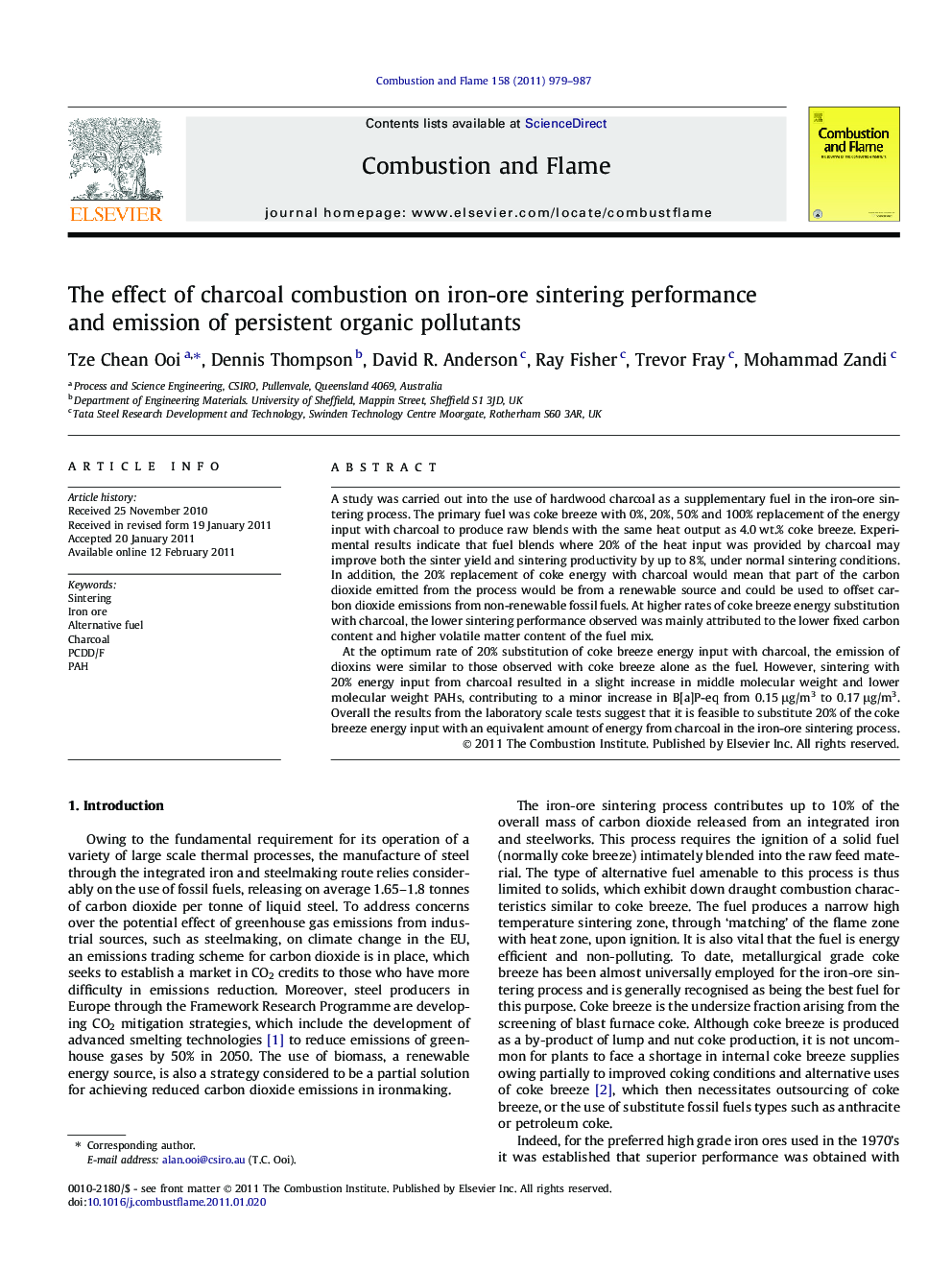| Article ID | Journal | Published Year | Pages | File Type |
|---|---|---|---|---|
| 169941 | Combustion and Flame | 2011 | 9 Pages |
A study was carried out into the use of hardwood charcoal as a supplementary fuel in the iron-ore sintering process. The primary fuel was coke breeze with 0%, 20%, 50% and 100% replacement of the energy input with charcoal to produce raw blends with the same heat output as 4.0 wt.% coke breeze. Experimental results indicate that fuel blends where 20% of the heat input was provided by charcoal may improve both the sinter yield and sintering productivity by up to 8%, under normal sintering conditions. In addition, the 20% replacement of coke energy with charcoal would mean that part of the carbon dioxide emitted from the process would be from a renewable source and could be used to offset carbon dioxide emissions from non-renewable fossil fuels. At higher rates of coke breeze energy substitution with charcoal, the lower sintering performance observed was mainly attributed to the lower fixed carbon content and higher volatile matter content of the fuel mix.At the optimum rate of 20% substitution of coke breeze energy input with charcoal, the emission of dioxins were similar to those observed with coke breeze alone as the fuel. However, sintering with 20% energy input from charcoal resulted in a slight increase in middle molecular weight and lower molecular weight PAHs, contributing to a minor increase in B[a]P-eq from 0.15 μg/m3 to 0.17 μg/m3. Overall the results from the laboratory scale tests suggest that it is feasible to substitute 20% of the coke breeze energy input with an equivalent amount of energy from charcoal in the iron-ore sintering process.
